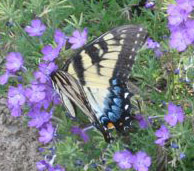Here is a comprehensive article on the healing benefits of Moxibustion. When combined with Integrative Medicine, 5 Element Asian Medicine, Acupressure, Herbs and Nutrition, Â this treatment very successful, and I have used it for over thirty years. Although this is needle-less acupuncture, I feel in a comprehensive healing program Moxibustion is even more effective for many conditions than acupuncture with needles. Done correctly Moxa can effectively open the meridian channels so that the Chi can freely pass again, and this is especially seen when combined with Meridian Acupressure Therapy. A bonus in our stress-filled world is that it is very relaxing for the patients.
US National Library of Medicine
Evid Based Complement Alternat Med. 2013; 2013: 379291.
Published online 2013 Sep 12. doi:10.1155/2013/379291
PMCID: PMC3789413
The Mechanism of Moxibustion: Ancient Theory and Modern Research
Hongyong Deng and Xueyong Shen 1 ,2 ,*
Author information Article notes Copyright and License information
1. Introduction
Moxibustion is a kind of external treatment; it is based on the theory of traditional Chinese medicine (TCM), and it usually bakes acupoints with burning moxa wool. Moxibustion can dredge meridians and regulate qi-blood and has been used to prevent and cure diseases for more than 2500 years. Zuo zhuan of the pre-Qin dynasty in China, which recorded a disease discussion occurred in 581 B.C., is considered to be the earliest literature of moxibustion. The silk books discovered in Mawangdui tomb of the Han dynasty (about 168 B.C.), Moxibustion Classic of Eleven Foot-hand Meridians and Prescriptions for Fifty-two Diseases, had documented the use of moxibustion to treat complex diseases. There are a lot of moxibustion contents in Inner Canon of Huangdi; it inferred that the origin of moxibustion is related to the living habits and disease characteristics of northern Alpine nation in the part of Su wen, Yi fa fang yi lun. Later doctors after Han dynasty had made considerable progress in theory and practice on moxibustion and promoted moxibustion to be a mature and widely used therapy.
Moxibustion has been applied in treating a great range of diseases. A bibliometric analysis on the papers published from 1954 to 2007 in China showed that up to 364 kinds of diseases can be treated with moxibustion. The most proper indications of moxibustion therapy are malposition, diarrhea, and colitis; the common proper indications are urinary incontinence and dysmenorrhea; the next common proper indications are knee osteoarthritis, temporomandibular joint disturbance syndrome, soft tissue injury, heel pain, asthma, urinary retention, and herpes zoster [1]. Moxibustion can also be used to treat weakness, fatigue, and aging related problems. Moxibustion can be classified as traditional moxibustion, drug moxibustion, and modern moxibustion. Traditional moxibustion therapy is the most commonly used in the ancient and contemporary moxibustion clinics; it is characterized by the use of moxa as burning material and can be divided into direct moxibustion and indirect moxibustion depending on whether moxa is directly in contact with the skin while operating. A moxa cone placed directly on the skin and ignited is called direct moxibustion, while the moxa kept at certain distance from the skin is called indirect moxibustion. The insulating materials of indirect moxibustion can be air, garlic, ginger, aconite, salt, and so forth. Drug moxibustion, also named nature moxibustion, uses irritant drugs (such as cantharis, garlic, and semen sinapis) to coat the surface of acupoints and make local skin flushed and blistered to cure diseases. Modern moxibustions, such as microwave moxibustion, laser moxibustion, and electrothermal moxibustion, are used to simulate traditional moxibustion stimulation factors by physical or chemical methods to achieve therapeutic effects of moxibustion. Usually, narrow sense of moxibustion refers to the traditional moxibustion with moxa. This review will concentrate on the ancient theory and modern mechanism research of traditional moxibustion.
https://www.ncbi.nlm.nih.gov/pmc/articles/PMC3789413/
